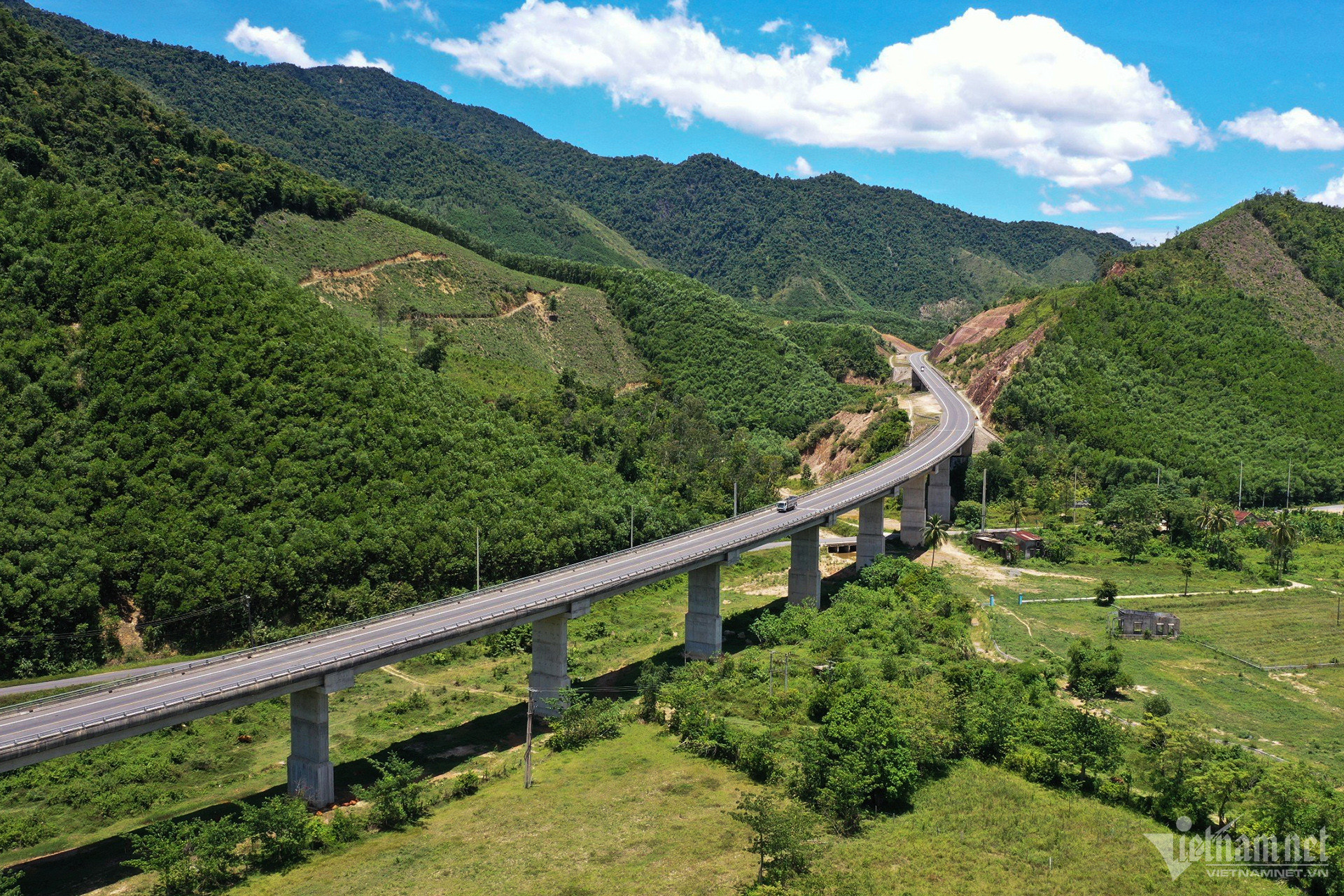
In 2014, the Noi Bai – Lao Cai Highway was put into operation amid worries about the lack of a median strip and emergency lane.
According to the Traffic Police Department under the Ministry of Public Security, from 2022 to October 2023, 50 traffic accidents occurred on that highway, claiming 18 lives, injuring 43 and damaging 101 vehicles.
Meanwhile, according to the Thua Thien - Hue Traffic Police Sub-department, 36 traffic accidents occurred within one year, by February 18, 2024, on the Cam Lo – La Son Highway, killing 6 and injuring 20.
Experts say that if the two highways had been designed with international standards, and the Law on Road Traffic Safety had been strictly observed, the number of accidents would not have been as high.
In developed countries, highways are planned and designed under national standards. Every country sets standards of its own, but there are general standards observed by all countries.
There must be at least two lanes for each way, and a hard median strip to divide roads into two separate sections that do not intersect at the same level with one or more roads. On highways, motorbikes, agricultural machines, rudimentary vehicles and pedestrians are banned. There are always enough services and equipment to ensure uninterrupted, large and high-speed traffic, and to mitigate accidents as many as possible.
Meanwhile, in Vietnam, there are many highways that don’t follow any international standards. On Cam Lo – La Son, La Son – Tuy Loan, Yen Bai – Lao Cai, Thai Nguyen Cho Moi, and Hoa Lac – Hoa Binh highways, there is only one lane for every way for vehicles to circulate, while there is no emergency lane.
On Mai Son-Highway 45, Highway 45-Nghi Son and Nghi Son – Dien Chau, there are two lanes for each way, but there is no emergency lane.
On Cam Lo – La Son, there is only one lane (3.5 meters wide) for each way, and there is no hard median strip and emergency lane. There is one overtaking section in every 10 kilometers of highway with the length of 1.5-2 kilometers.
On highways with just one lane for each way, when vehicles ahead go slowly, there is no lane for others to overtake them. If drivers are careless or if they encroach on the other lane, accidents may occur.
Associate Prof Dr Nguyen Quang from the Vietnam Road and Bridge Association said no highway with only one lane or with two lanes but no emergency lane exists under international highway technical standards.
“I believe that the highways with one lane and the highways with two lanes and without emergency lanes only exist in Vietnam. It is really dangerous for vehicles with high speed."
According to the Ministry of Public Security, seven highways still cannot meet the standards for highways. As for the Cam Lo - La Son, the ministry suggested lowering the exploitation level to ensure the observance of current regulations. There must be a roadmap for upgrading and improving roads.
While Vietnam has been building highways for tens of years, it still doesn’t have national technical regulations for highways.
Twenty years have elapsed since the construction of the first highway in Vietnam – HCM City – Trung Luong, started in December 2004. Later, many other highway projects kicked off and put into operation, with the total length of 1,800 kilometers.
However, only at the sixth session of the 15th National Assembly (October 2023) did the Ministry of Transport (MOT) propose that the government promulgate a set of technical regulations for highways within the first quarter 2024.
The tardiness in setting a legal framework in the field has had a big impact on the planning and setting of technical standards and regulations. This also explains why Vietnam’s highways do not follow any standards.
Vietnam plans to build 5,000 kilometers of highways by 2030. In addition to the trans-Viet highway in eastern part, Vietnam has kicked off a series of other highway projects. It is expected that 14 more projects are about to start this year.
Because of limited financial capability, most of the highway projects in Vietnam are invested and developed in stages. And that is one of the causes behind the problems. After the first phases, highways are put into operation despite the lack of median strips and emergency lanes.
Nguyen Huy Vien